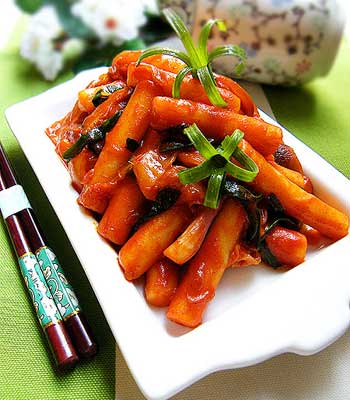Posted 2017/7/19
Rice cake, also called sticky cake, promises a better year. It is made of sticky rice in the south and sticky millet in the north.
Rice cake has a long history. In the Han Dynasty, rice cake was called daobing, gao, er or ci. The cookbook of the 6th century Shi Ci records the way to make rice cake “baijiantang”. Major Skills of Qi People of the Northern Dynasties describes how to grind rice into powder and make cake.

Eating rice cake on New Year's Day began to gain popularity in the Ming and Qing Dynasties, especially in the south. In the last years of the Ming Dynasty, Volume 2 of Capital Scenery records that, on New Year's Day, “people eat cake with a Chinese date to hope for a better year”. In the North,in Hebei Province,in the reign of Jiajing, Wei County Annals says, the local people ate “steamed New Year cake”. In the South, local chronicles of Suzhou and Jiading call it“Festival Cake”.

In the Ming Dynasty, in the reign of Zhengde, Qiongtai Chronicle in Guangdong Province noted that the local people ate Spring Cake: Before the “New Year's day, polished glutinous rice powder is mixed with sucrose or lye to steam Spring Cake in steamers, the girth of the cake is about one chi (one third of a meter), and five or six cun thick (one cun equal to one third of a decimeter). The rice is combined together with various kinds of fruits for the yearly offering of sacrifices to the ancestors,and to serve as mutual presents between friends and acquaintances.”It’s similar to the birthday cakes of today. The description in Volume 12 of the Qingjia Selection by Ye Gulu is more detailed. It says that the cake is made of millet flour and sugar, and is called rice cake. Some are white and others are yellow. The one-foot-long square cake is called “square rice cake”. The gold ingot-shaped one is called “gold ingot cake”, which is used to worship ancestors and present to relatives and friends. There are also lathy ones called “lathy cake” and wide ones called “wide cake”. During the festival, rich families usually hire others to make cake. Ordinary families usually buy cakes in stores.